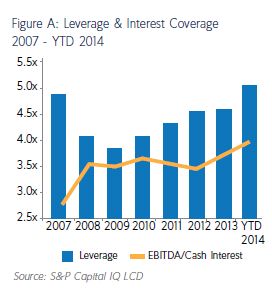LETTER FROM THE EDITORS
In the aftermath of the financial crisis, the U.S. federal government provided banks with liquidity and incentives to lend money to borrowers. Interest rates plummeted. Companies took on more debt to stay afloat. The results have been lasting: companies are still able to access cheap financing, thereby quelling the tide of bankruptcy filings, which continues to ebb. While there was speculation that 2014 might find retail, shipping and municipalities turning to the bankruptcy courts, for the most part, filings are at historical lows.
However, bankruptcy professionals aren't sitting on the sidelines. Pre-petition workouts, out-of-court restructurings and other alternatives remain popular. When a chapter 11 case is filed, it's increasingly common to consider a shorter, less expensive path: an asset sale, allowed under Section 363 of the Bankruptcy Code, for the benefit of the debtor, the buyer and, occasionally, creditors.
Keeping pace with the speed of those deals—more sprint than marathon—requires a knowledge of the ins and outs of the Bankruptcy Code, the economy, and the politics of each deal.
And, of course, it is essential to choose the right bankruptcy team.
In this publication, Duane Morris partners come together with financial industry and restructuring professionals to share commentary and insights into the markets and best practices for distressed companies, and the bankruptcy professionals who help debtors and creditors. It's our goal with each event and subsequent issue of Optimize to provide clients with the very best in legal and business thought leadership in order to leverage the knowledge and experience of some of the most vital players in the industry.
We hope you find this third edition of our Optimize series informative and interesting, and we welcome your questions and comments.
STATE OF PLAY: CREDIT IS KING, RISK IS REASONABLE
Bankruptcy has always been a last resort for troubled companies. But that is especially true now. In this economy, where's the need?
Duane Morris partner Lawrence J. Kotler moderated our two panel discussions during which our esteemed contributors provided insight and commentary. In our first panel, Duane Morris partners Walter J. Greenhalgh and James J. Vincequerra were joined by Mark Lawrence, Managing Director at Apollo Global Capital Management; and Rob Warshauer. They discussed the state of play in bankruptcies in 2014.
"The capital markets are on fire" for companies seeking to raise new capital, said Rob Warshauer. Both leveraged loans and high-yield markets were very strong in 2013, and with the expectation of rising rates, companies have gravitated to high-yield deals with fixed interest rates, rather than the fluctuating rates of leveraged loans. (See Figure A.) In other words, many companies are just taking on more debt because it is so cheap. Said Warshauer: "Funds need to put money to work. They want to know, 'how do I get a little more yield?'"
In fact, Warshauer has a strong message to clients and potential clients. "If you are CEO or a CFO of a company, and you have not refinanced your debt, tomorrow morning when you go into the office, the first thing you should do is fire yourself. There is practically no reason not to refinance your debt in this environment."

Added Mark Lawrence, Managing Director at Apollo Global Management: "We've definitely seen a bifurcation in the market. Above $500 million, it's very easy to get credit; you can get it syndicated. Even $350 million and above, you can still get it rated. Below $50 million, we've seen a tremendous amount of money raised for direct lending funds. It's that middle space, between around $50 million and $250 million, where we've seen the holes." "We're starting to see leverage really creep up on an enterprise value," Lawrence said, and risk is increasingly acceptable. "People are getting consistently more comfortable with PIK (pay-in-kind) loans." PIK loans, of course, are expensive, high-risk financing instruments. "They are comfortable that these companies are not going to default. At least, they are willing to take that added risk in order to balance their portfolios to get the returns they need."
Disclaimer: This Alert has been prepared and published for informational purposes only and is not offered, nor should be construed, as legal advice. For more information, please see the firm's full disclaimer.


